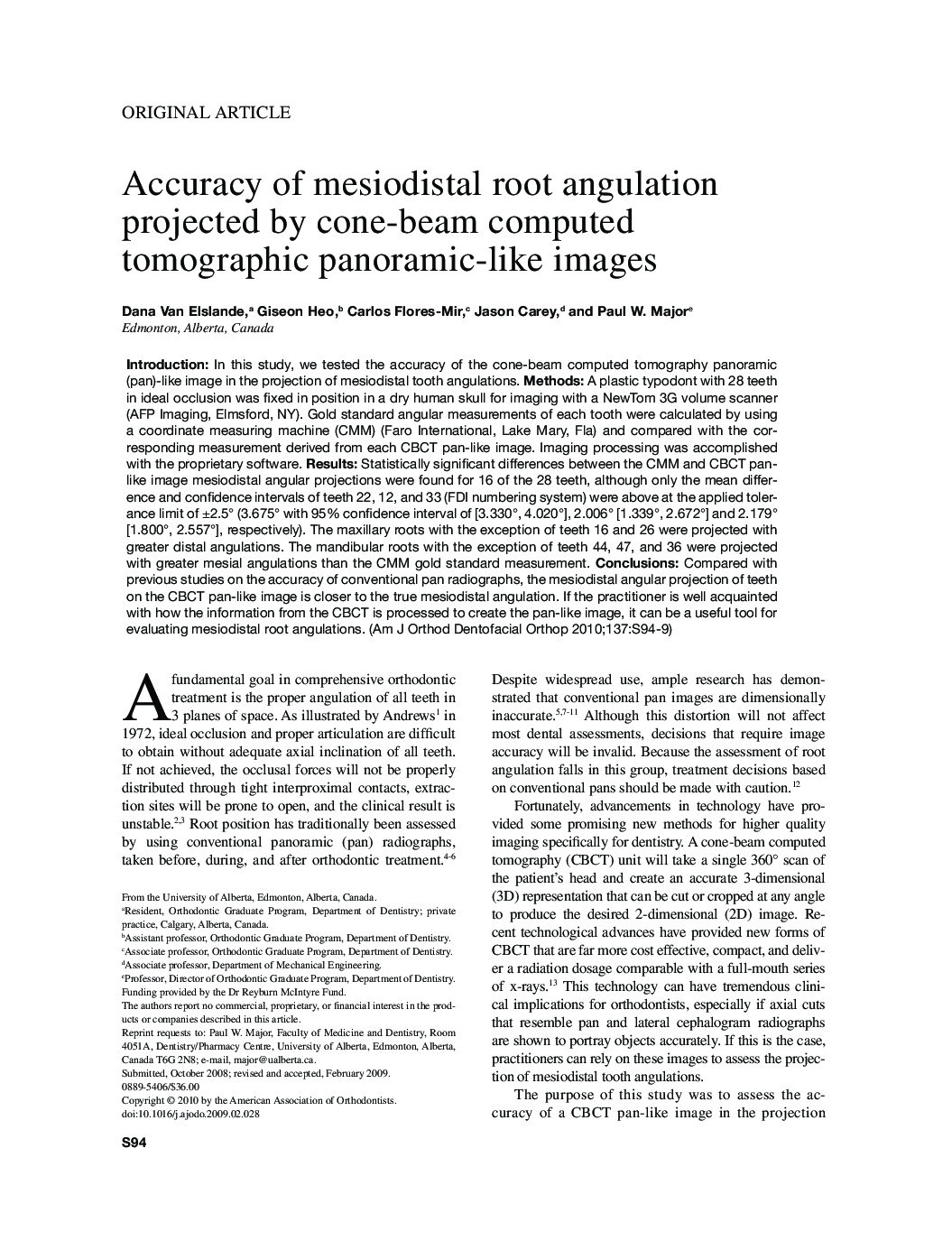| Article ID | Journal | Published Year | Pages | File Type |
|---|---|---|---|---|
| 3119627 | American Journal of Orthodontics and Dentofacial Orthopedics | 2010 | 6 Pages |
IntroductionIn this study, we tested the accuracy of the cone-beam computed tomography panoramic (pan)-like image in the projection of mesiodistal tooth angulations.MethodsA plastic typodont with 28 teeth in ideal occlusion was fixed in position in a dry human skull for imaging with a NewTom 3G volume scanner (AFP Imaging, Elmsford, NY). Gold standard angular measurements of each tooth were calculated by using a coordinate measuring machine (CMM) (Faro International, Lake Mary, Fla) and compared with the corresponding measurement derived from each CBCT pan-like image. Imaging processing was accomplished with the proprietary software.ResultsStatistically significant differences between the CMM and CBCT pan-like image mesiodistal angular projections were found for 16 of the 28 teeth, although only the mean difference and confidence intervals of teeth 22, 12, and 33 (FDI numbering system) were above at the applied tolerance limit of ±2.5° (3.675° with 95% confidence interval of [3.330°, 4.020°], 2.006° [1.339°, 2.672°] and 2.179° [1.800°, 2.557°], respectively). The maxillary roots with the exception of teeth 16 and 26 were projected with greater distal angulations. The mandibular roots with the exception of teeth 44, 47, and 36 were projected with greater mesial angulations than the CMM gold standard measurement.ConclusionsCompared with previous studies on the accuracy of conventional pan radiographs, the mesiodistal angular projection of teeth on the CBCT pan-like image is closer to the true mesiodistal angulation. If the practitioner is well acquainted with how the information from the CBCT is processed to create the pan-like image, it can be a useful tool for evaluating mesiodistal root angulations.
